Lis has saved me the trouble of telling you all about the Palio, but this pic shows the winner of the last one that took place before we were there.

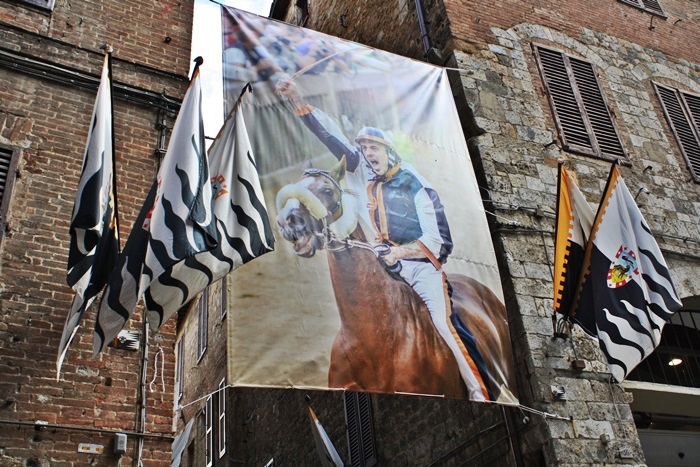
- 009.JPG (189.04 KiB) Viewed 304 times
We watch every Palio and the last one was won by a horse without a rider!


It was now time for a quick bite....pizza slices!

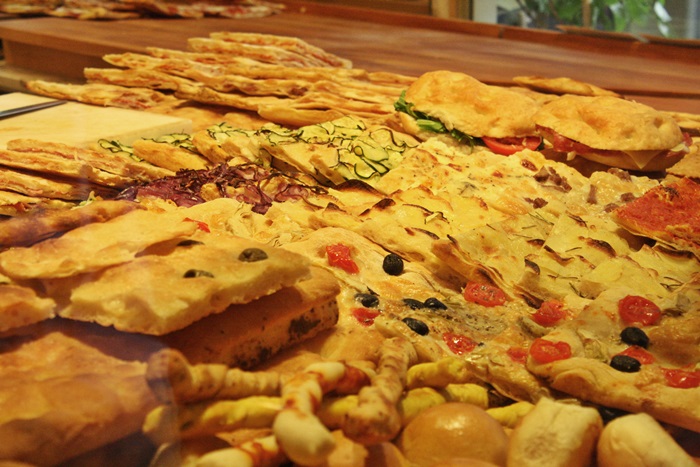
- 082.jpg (150.6 KiB) Viewed 304 times
I had to take a pic of this fruit shop as it was so colourful...then the owner came and shouted at me for taking photos instead of buying (even though other people were also taking photos

), so we bought some grapes and peaches.


- 083.JPG (192 KiB) Viewed 304 times
It was then onto the Cathedral. The cathedral itself was originally designed and completed between 1215 and 1263 on the site of an earlier structure. It has the form of a Latin cross with a slightly projecting transept, a dome and a bell tower. The dome rises from a hexagonal base with supporting columns. The lantern atop the dome was added by Gian Lorenzo Bernini. The exterior and interior are constructed of white and greenish-black marble in alternating stripes. Black and white are the symbolic colors of Siena, etiologically linked to black and white horses of the legendary city's founders, Senius and Aschius.

- 093.JPG (157.35 KiB) Viewed 304 times
The façade of Siena Cathedral is one of the most fascinating in all of Italy and certainly one of the most impressive features in Siena. Acting as the main entryway to the Duomo proper, the west facade boasts three portals - the central one is capped by a bronze-work sun.
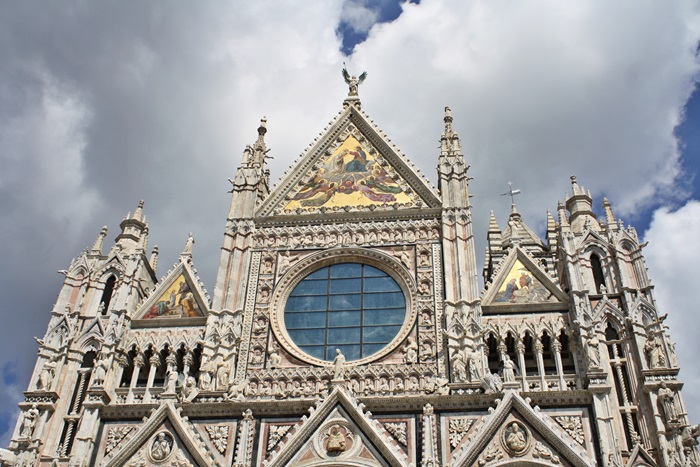
- 096.JPG (163.72 KiB) Viewed 304 times
In the interior the pictorial effect of the black and white marble stripes on the walls and columns is striking.

- 101.JPG (167.71 KiB) Viewed 304 times
The inlaid marble mosaic floor is one of the most ornate of its kind in Italy, covering the whole floor of the cathedral. This undertaking went on from the 14th to the 16th centuries, and about forty artists made their contribution. The floor consists of 56 panels in different sizes. Most have a rectangular shape, but the later ones in the transept are hexagons or rhombuses. They represent the sibyls, scenes from the Old Testament, allegories and virtues. Most are still in their original state. The earliest scenes were made by a graffito technique: drilling tiny holes and scratching lines in the marble and filling these with bitumen or mineral pitch. In a later stage black, white, green, red and blue marble intarsia were used. This technique of marble inlay also evolved during the years, finally resulting in a vigorous contrast of light and dark, giving it an almost modern, impressionistic composition. We were lucky, as the uncovered floor can only be seen for a period of six to ten weeks each year. The rest of the year, it is covered and only a few mosaics are on display.
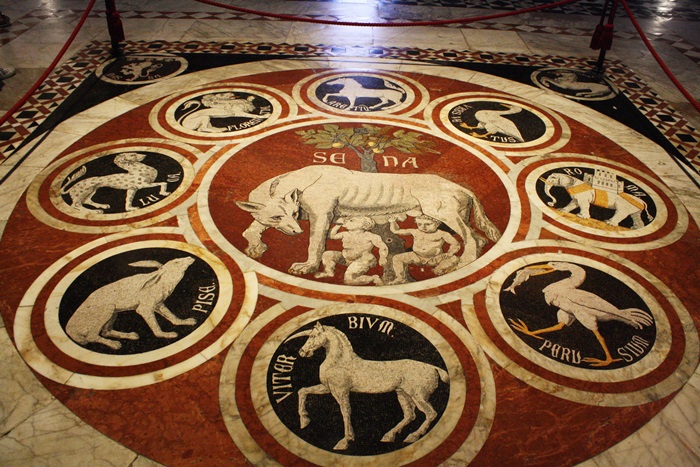
- 105.JPG (200.28 KiB) Viewed 304 times
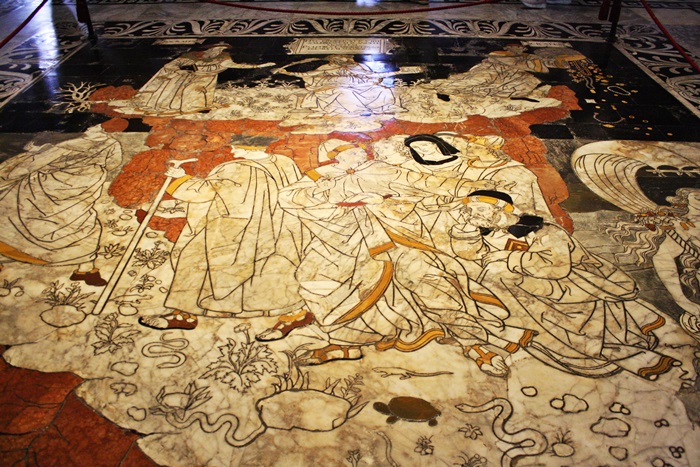
- 115.JPG (216.03 KiB) Viewed 304 times